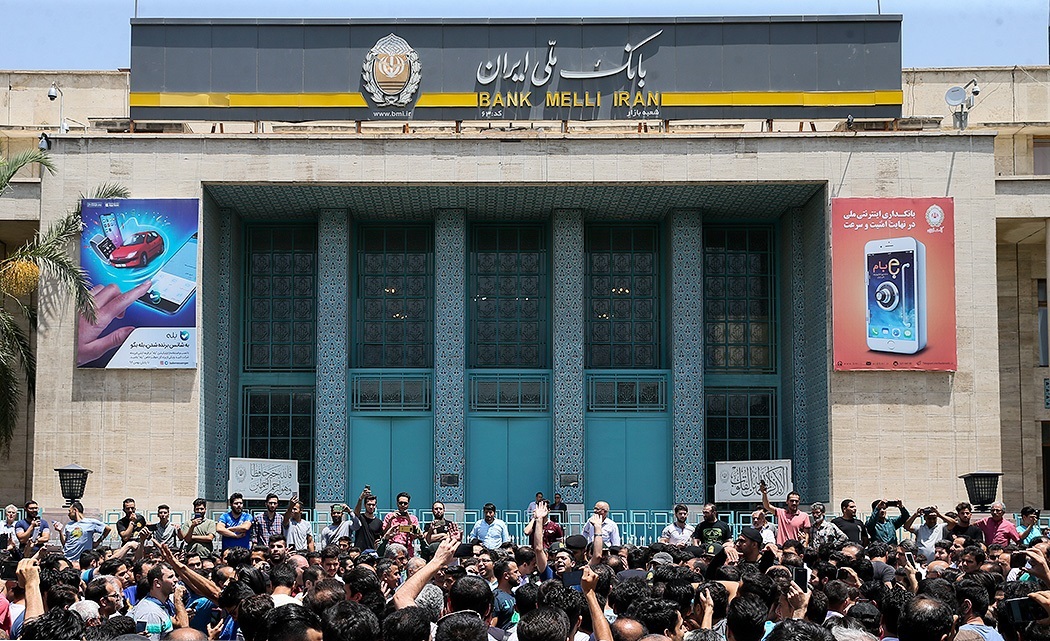
In an ongoing series exploring the effects of China’s Belt and Road Initiative on the cities involved, our next stop is Iran’s capital Tehran, which China wants to make into an essential node of the belt and road initiative, in spite of mounting US sanctions.
Billboard
Skyscrapper
Halfpage
China’s Belt and Road Initiative has been described as a modern-day silk road. Encompassing a series of massive infrastructural and investment projects across parts of Europe, Africa and Asia, it follows several routes from mainland and coastal China, across the sea and over land, through the Central Asian republics and several southeast Asian port cities and reaching as far as Djibouti and Mombasa in East Africa, Duisburg in Germany and Venice in Italy. As part of an ongoing series exploring the effects this huge project is having on the cities involved, our last stop was Athens, next stop, Tehran.
In May last year President Trump pulled the US out of the Joint Comprehensive Plan of Action, the agreement better known as the “Iran Nuclear Deal”. Established between Iran and the US towards the end of his predecessor President Obama’s administration, the deal was meant to reverse decades of hostility between the two nations and bind Iran to reducing its nuclear capability, while committing the US to lifting a sanctions regime which has had extremely damaging effects on Iran’s economic development over the years. With Trump’s reversal, Iran returned to its role as a pariah state in the eyes of the world’s pre-eminent superpower.
It is in this context that China is seeking to position Iran as one of the essential nodes in its Belt and Road Initiative. Which begs the question, will America’s new relationship with Iran get in the way of China’s plans?
It’s a question that gets us closer to the heart of what this whole Belt and Road project is really about. In essence, it represents a threat to the current world order and a roadmap for a 21st Century dominated not by the US but by China. But this isn’t the place to explore these big geopolitical maneuverings. Instead, we’re here to understand how they affect things at the urban scale of Tehran.
Bringing in a host of international rail investment
The effects of the Belt and Road Initiative will be most dramatically felt in the rail infrastructure of both Tehran and Iran more broadly. Most importantly, China is building a 3,200km railway stretching from its mainland, passing through Kazakhstan, Uzbekistan and Turkmenistan, and ending up in Tehran. As part of this, China has initiated a project worth $1.5bn to electrify the railway line that runs from Tehran to the nearby city of Mashhad, and which also passes through Shahrud, where the Iranian Space Agency is located.
Much of this development also brings in companies from several other international players. Ferrovie, Italy’s state rail company, has signed a $1.37 billion deal to build a high-speed railway between the nearby cities of Qom and Arak. Russian company Transmashholding and French company Alstom are supplying rolling stock and carriages. Meanwhile, Japan has signed a deal to provide $10bn in funding for various railway ventures, including two railways linking north and south Tehran.
However, new US sanctions on Iran are set to affect all of these countries later this year (along with China and also Greece, Turkey, South Korea and India). As well as posing a serious obstacle to the aforementioned development, the sanctions will also prevent Iran from selling oil to these countries, which will in turn limit the state’s ability to supply its citizens with certain basic necessities.
The effect of sanctions was already felt on 25 May last year, when a series of spontaneous demonstrations sprang up in Tehran, with shopkeepers closing their stalls and protestors filling the historic Grand Bazaar, in response to out-of-control inflation that had seen the value of Iran’s rial drop to 90,000 to the dollar.
Though these protests weren’t a direct result of the sanctions – Iran had already experienced protests throughout the country earlier in the year, the biggest since the Green Movement of 2009 –it seems likely that further sanctions will lead to more protests, since they will help to exacerbate several pre-existing problems in the city.
A majority in Tehran are barely managing
As the most populous city in western Asia, with a population of fourteen million if you count the wider metropolitan region, Tehran has its fair share of complex urban problems. In addition to financial difficulties, the city also hosts some of the world’s highest levels of congestion and air pollution. Meanwhile, citizens face a major cost of living crisis and suffer under an atrocious planning regime: the legacy of an inadequately implemented 1960s masterplan developed by “godfather of the shopping mall” Victor Gruen (for more on this check out Oliver Wainwright’s recent article on Iran for The Guardian).
All this adds up to a situation which is barely manageable for the majority of citizens.
Citing a survey conducted by Iran Urban Economics Scientific Association on Iran’s English language papers the Financial Tribune claims that 70% of Tehran’s population “have exceeded the optimum level”, by which they mean the city can only provide just over two million of its residents with decent living conditions.
In light of this, and the forthcoming sanctions escalation, it feels like the Belt and Road Initiative is doomed to make only a dent in the mounting problems faced by Tehran’s citizenry.
That is, unless China willfully flouts the American line. Watch this space.












